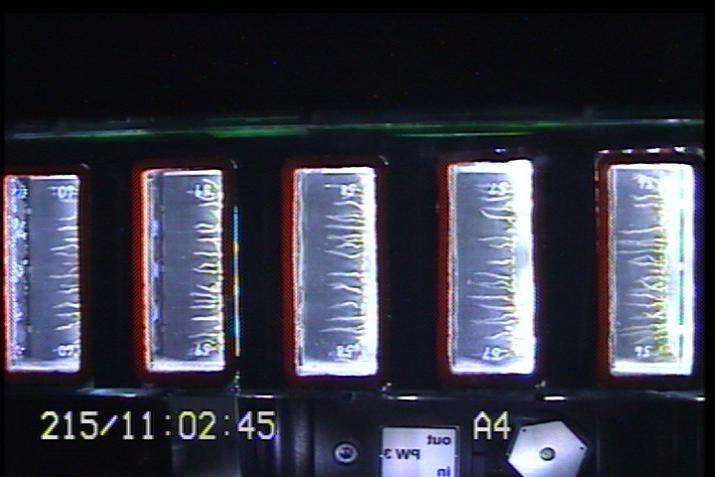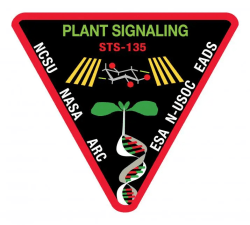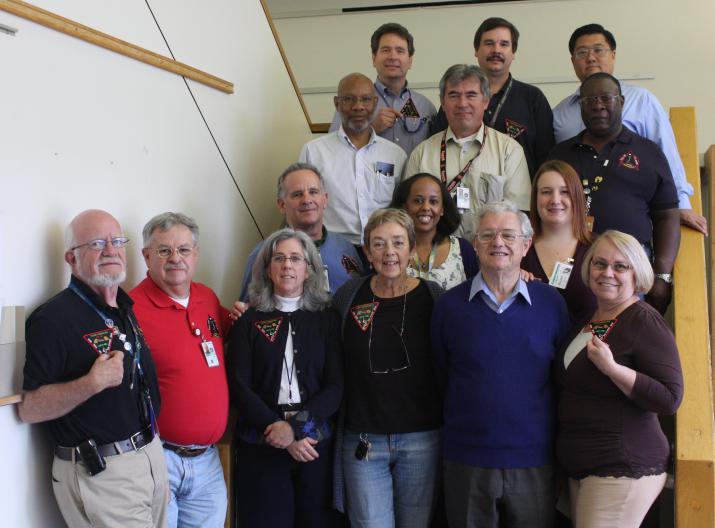Plant Signaling (STS-135)
The Plant Signaling experiment studied the effects of microgravity on plant growth. During long-term space exploration it will be necessary to provide astronauts with regenerative sources of food. As new information about how plants grown in microgravity emerges, sustainable plant-based life support systems may be developed.
Title: The Effect of Spaceflight on Transgenic Arabidopsis Plants with Compromised Signaling
Principal Investigator: Dr. Imara Perera, North Carolina State University, Raleigh, North Carolina
Payload Developer: NASA’s Ames Research Center
Overview
Plant Signaling studied the effects of gravity (0 g and 1 g) on the biochemical responses of Arabidopsis thaliana plant seedlings (roots and shoots; wild type and genetically modified plants). Images of seedlings were captured and down-linked to Earth during the spaceflight experiment. Plant samples were harvested at the end of the experiment and preserved for post-flight analysis on Earth.
The experiment was conducted in the European Space Agency’s (ESA) European Modular Cultivation System (EMCS), located on the International Space Station in the Columbus Module. Sixteen Experiment Containers containing Plant Seedling Seed Cassettes (with Arabidopsis seeds) were launched on space shuttle Atlantis and installed by station crew into the EMCS. Personnel on Earth at ESA’s Norwegian User Support Operations Center initiated an automated software command sequence for hydration of the seeds, atmospheric control, image capture, lighting, and centrifuge speed (g-level). Automated image capture was performed according to the experiment timeline. At the conclusion of the experiment, Experiment Containers were removed from the EMCS Facility and the Seed Cassettes were removed from the Experiment Containers. The Seed Cassettes were placed in EMCS cold stowage bags and placed into the Minus Eighty Degree Laboratory Freezer on the space station, where they remained until they were returned to Earth. The empty Experiment Containers were kept in ambient stowage on the station until they were returned to Earth for refurbishment.
While this project addresses basic research questions in plant biology, the research will also provide insights into the cultivation of plants during spaceflight on long-term missions. Ultimately, understanding mechanisms of plant development will aid in improving crop production and agricultural yields on Earth.
For more information, see the Space Station Research Explorer for the Plant Signaling mission.
Launched: July 8, 2011, Final shuttle flight
Orbiter: Atlantis
Orbiter Mission Number: STS-135
Increment: Ascent on STS-135 Increment 28; operation Increment 29-30; descent on SpaceX (Frozen samples)
Payload Team
Principal Investigator – Dr. Imara Perera, North Carolina State University, Raleigh, North Carolina
Co-investigator – Dr. Heike Winter-Sederoff, North Carolina State University, Raleigh, North Carolina
Co-investigator – Dr. Christopher Brown, North Carolina State University, Raleigh, North Carolina
Research Associate – Caroline M. Smith, North Carolina State University, Raleigh, North Carolina
Project Manager – Dr. Marianne Steele, Lockheed Martin, Ames Research Center
Operations Lead – Dr. David Heathcote, Lockheed Martin, Ames Research Center
Science Test Lead – Dr. Robert Bowman, Lockheed Martin, Ames Research Center
Project Scientist – Dr. Gwo-Shing Sun, Lockheed Martin, Ames Research Center
Test and Verification Engineer – Kristofer Vogelsong, Lockheed Martin, Ames Research Center
Test and Integration Engineer – David Leskovsky, Lockheed Martin, Ames Research Center
Operations – Chris Barreras, Lockheed Martin, Ames Research Center
Quality Assurance – Robert Burney, NASA, Ames Research Center
Safety – Susan Suffel, NASA, Ames Research Center
Mechanical Engineer – Edward Houston, Lockheed Martin, Ames Research Center
Electrical Engineer – Al Howard, Lockheed Martin, Ames Research Center
Systems Engineer – Lance Ellingson, Lockheed Martin, Ames Research Center
Science Lab Support – Tisha Crittendon, Lockheed Martin, Ames Research Center
Engineering Technician – Marty Galinski, Lockheed Martin, Ames Research Center
Engineering Technician – Joseph Dwyer, Dynamac, Ames Research Center
NASA Lead – Cecilia Wigley, NASA, Ames Research Center
































